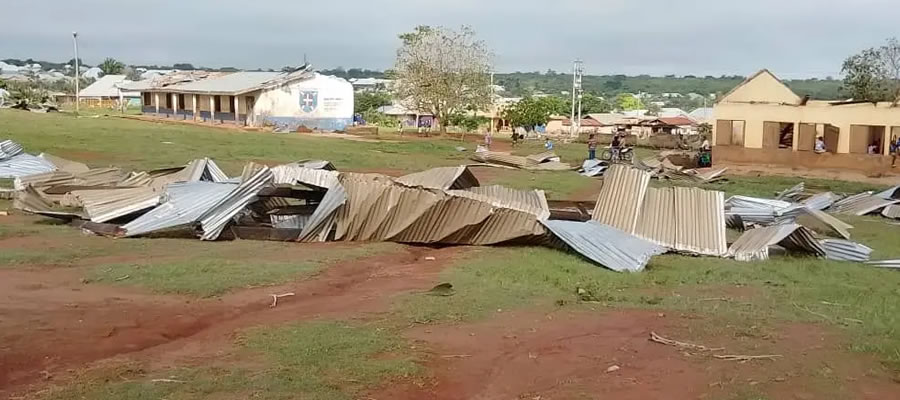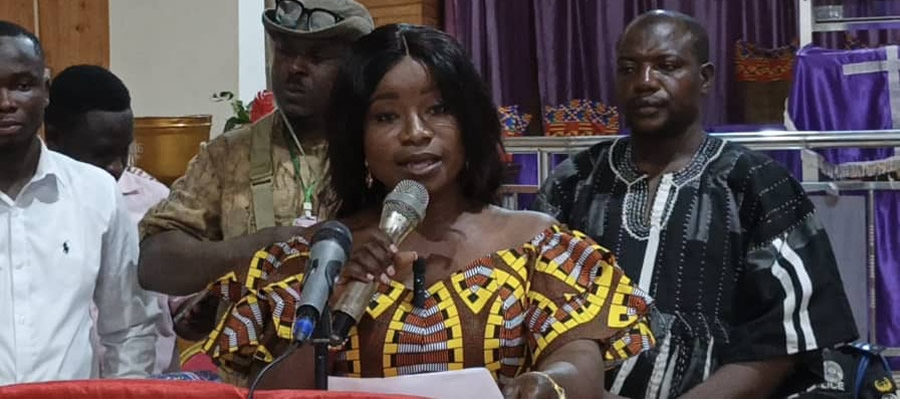

climate & vegetation
Climate
The prevailing climatic conditions in the municipal constitute important parameters for development. Climate, for example, has some influence on the quality and quantity of land cover. Similarly, rainfall and available moisture content are vital factors for existing and potential resource use in the municipal. The rainy season occurs between April and October with a short dry spell in August. The average annual rainfall is about 1,140 – 1,270mm.
The Municipality experiences an average of four (4) months of rain. However, rivers such as Tain, Subin and the Black Volta flow throughout the year, which can be dammed to support dry season farming. The pattern of rainfall has been erratic over the years, which has affected production levels of farmers.
The dry season, also known as the hamattan, occurs between November and February. This long period of dryness makes the Municipality very vulnerable and susceptible to bush fires. Bush burning is therefore very rampant during the dry seasons. Community education and fire volunteerism must be intensified to reduce the occurrences of bush fires during the dry seasons.
The temperature in the Wenchi Municipal is generally high averaging about 24.5oC. Average maximum temperature is 30.9 (oC) and a minimum of 21.2 (oC). The hottest months are February to April. The annual maximum, minimum temperatures and changes in mean maximum and minimum temperatures in Wenchi Municipality (1961 – 2000) respectively.
Vegetation
The Wenchi Municipal spans the moist-semi-deciduous forest and the Guinea Savannah woodland vegetation zones. The Guinea savanna woodland represents an eco-climatic zone, which has evolved in response to climatic and edaphic limiting factors and has been modified substantially by human activities. The original forest vegetation has been subjected to degradation, caused mainly by the indiscriminate bush fires, slash-and burn agriculture, logging and felling of trees for timber and fuel over the years.
The cumulative effect is that secondary vegetation occurs in cultivated areas. Timber species like Odum, Sapele, Wawa and Mahogany are found in places such as Nwoase. In the semi-derived savanna areas, there is the absence of large economic trees as a result of logging, charcoal burning and mechanised farming.
The groves at Nwoase show that with protection, forests in the Municipality can be very productive because the soils in the sacred groves appear more fertile compared to soils lying a few metres away which have been laid bare by intensive cultivation and other unsustainable uses.
In the grooves, wildlife like deer and antelope are found. Other forest reserves are Sawsaw and Yaya. The combination of the vegetation zones – guinea savannah, transitional zone and the forest permit the cultivation of a variety of crops – cereal, tubers and vegetables and even animal rearing.
Rainfall
The rainfall pattern is characterised by seasonality, which is a limiting factor in agriculture and plant growth. The district has two main seasons – rainy and dry seasons.
Geology & soil
Geologically, the district is underlained mostly by the Birrimain rock formation. The area falls under the Lower Birimanain, which consists of such metamorphosed sediments as phyillite and schist. There are also granite and granodiorite in the southeast and western parts of the municipality.
A greater portion of the Wenchi Municipal falls under the savannah ochrosol with some lithosols. The land is generally low lying and most of the soils are sandy loam and in the valleys, loamy soils exist. The soils are fairly rich in nutrients and are suitable for the cultivation of crops such as maize, yams, cocoyam, and cassava. There are clay deposits for pottery industry and burnt bricks and the soil supports the cultivation of savannah, transitional and forest crops.
There are several rock deposits and outcrops in the Municipality within the outstretch of land between Wenchi Town and Buoku community. The rocks are currently being quarried for road and building construction. There are over ten (10) companies in the municipality that are mining these rock deposits with room for several other companies.
The exploitation of these rock deposits holds several benefits including employment creation and expansion of the local construction industry. Measures should however be put in place to control its negative environmental impacts.
Date Created : 11/29/2017 4:07:01 AM













 facebook
facebook
 twitter
twitter
 Youtube
Youtube
 +233 593 831 280
+233 593 831 280 0800 430 430
0800 430 430 GPS: GE-231-4383
GPS: GE-231-4383 info@ghanadistricts.com
info@ghanadistricts.com Box GP1044, Accra, Ghana
Box GP1044, Accra, Ghana